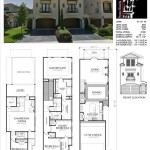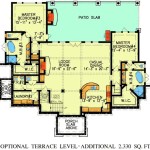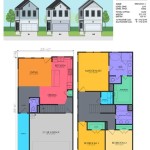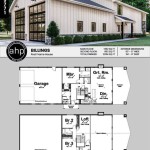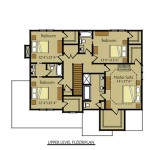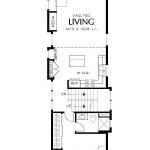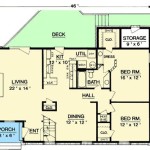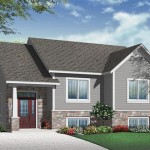Narrow Lot House Floor Plans: Maximizing Space and Style
Narrow lot house floor plans present a unique set of design challenges and opportunities. As urban areas become increasingly dense and land values rise, building on narrow lots has become a common and often necessary practice. Successfully designing a home for a narrow lot requires careful consideration of space optimization, natural light access, privacy, and efficient circulation. Understanding the core principles of narrow lot design is crucial for architects, builders, and homeowners seeking to create comfortable and functional living spaces within these constraints.
The term "narrow lot" generally refers to a building plot that is significantly longer than it is wide. The specific dimensions that qualify a lot as narrow vary depending on local zoning regulations and average lot sizes in a given area. However, a common characteristic is that the width of the lot is limited, which dictates the linear configuration of the house. This restriction necessitates innovative architectural solutions to maximize usable floor area while maintaining a desirable aesthetic.
One of the initial steps in planning a narrow lot house is a thorough site analysis. This involves understanding the orientation of the lot in relation to the sun, the location of adjacent buildings, and any existing easements or setbacks. Understanding these factors will inform decisions about the placement of windows, outdoor spaces, and entry points. It will also influence the overall layout of the house to promote natural light and privacy.
The design of a narrow lot house floor plan should also consider the lifestyle and needs of the occupants. Factors such as the number of bedrooms and bathrooms, the desired level of openness in the living spaces, and the need for storage space will all influence the layout. Balancing these needs with the limitations of the narrow lot is essential for creating a home that is both functional and enjoyable to live in.
Effective Space Planning Strategies
Given the limited width of a narrow lot, effective space planning is paramount. Several strategies can be employed to make the most of the available square footage. One common approach is to design open-concept living areas that combine the living room, dining room, and kitchen into a single, flowing space. This creates a sense of spaciousness and allows natural light to penetrate deeper into the house.
Vertical space utilization is another crucial aspect of narrow lot design. Building upwards, often with multiple stories, allows for greater floor area without increasing the footprint of the house. Strategic placement of stairs is important to minimize their impact on usable space. Winder stairs or spiral staircases can be used to save space compared to traditional straight staircases.
Storage solutions should be integrated seamlessly into the design. Built-in cabinetry, under-stair storage, and loft spaces can provide valuable storage without compromising living space. Multifunctional furniture, such as sofa beds and storage ottomans, can also help to maximize space utilization.
Careful consideration of room sizes is also necessary. While open concept living areas can create a sense of spaciousness, it is important to ensure that individual rooms are still adequately sized for their intended purpose. Overcrowding rooms can negate the benefits of an open layout. Thoughtful furniture placement is essential to ensure a comfortable and functional living environment.
Outdoor spaces, such as decks, patios, and balconies, can extend the living area of a narrow lot house. These spaces can provide opportunities for relaxation, entertainment, and gardening. Careful planning is needed to ensure that outdoor spaces are accessible from the interior of the house and provide adequate privacy from neighboring properties.
Minimizing hallways can also improve space efficiency. Hallways often consume a significant amount of floor area without providing functional living space. Designing layouts that eliminate or shorten hallways can free up space for more usable areas.
Maximizing Natural Light and Ventilation
Access to natural light and ventilation is essential for creating a comfortable and healthy living environment in a narrow lot house. However, the proximity of neighboring buildings can often limit the amount of natural light that reaches the interior of the house. Several strategies can be employed to overcome this challenge.
Strategic placement of windows is crucial. Tall, narrow windows can be used to capture light from higher angles, while skylights can bring natural light into areas that would otherwise be dark. Clerestory windows, which are located above the height of interior walls, can also provide natural light and ventilation while maintaining privacy.
Light wells or courtyards can be incorporated into the design to bring natural light and air into the center of the house. These outdoor spaces can also provide a sense of privacy and tranquility.
Light-colored interior finishes can help to reflect and distribute natural light throughout the house. Using light paint colors, light wood flooring, and reflective surfaces can brighten up the interior and create a more spacious feel.
Open floor plans can also help to maximize natural light penetration. By removing interior walls, light can travel further into the house. However, it is important to consider the impact of an open floor plan on privacy and noise levels.
Proper ventilation is also essential for maintaining a healthy indoor environment. Cross-ventilation, which involves the placement of windows on opposite sides of the house, can help to circulate air and remove stale odors. High ceilings can also improve ventilation by allowing warm air to rise and escape through high windows or vents.
The selection of window coverings can also impact natural light and ventilation. Sheer curtains or blinds can allow light to enter while providing some privacy. Blackout curtains can be used in bedrooms to block out light for sleeping.
Addressing Privacy and Noise Concerns
Privacy and noise control are important considerations in narrow lot house design, especially in densely populated urban areas. The proximity of neighboring buildings can create challenges in maintaining privacy and minimizing noise transmission. Several strategies can be employed to address these concerns.
Careful window placement is crucial for maintaining privacy. Avoid placing large windows directly facing neighboring properties. Use strategically placed windows, such as clerestory windows or windows that face onto private outdoor spaces, to maximize natural light while minimizing visibility from neighboring buildings.
Landscaping can also provide a natural barrier to improve privacy. Trees, shrubs, and fences can be used to screen views from neighboring properties. Consider the mature size of plants when selecting landscaping materials to ensure that they provide adequate privacy over time.
Solid walls and fences can also be used to create privacy in outdoor spaces. However, it is important to comply with local zoning regulations regarding fence heights and materials.
Soundproofing measures can be used to minimize noise transmission between the house and neighboring properties. Insulating walls, floors, and ceilings can help to reduce noise levels. Double-paned windows and solid-core doors can also improve sound insulation.
Consider the placement of bedrooms and other quiet areas in relation to noise sources. Placing bedrooms away from busy streets or neighboring properties can help to create a more peaceful sleeping environment.
Interior design choices can also impact noise levels. Soft furnishings, such as rugs and curtains, can help to absorb sound and reduce echoes. Fabric wall coverings can also improve sound insulation.
Acoustic panels can be used in specific areas to control noise levels. These panels are designed to absorb sound waves and reduce reverberation.
Building codes and zoning regulations often have specific requirements for sound insulation in multi-family buildings. It is important to consult with local authorities to ensure that the design complies with these requirements.
Narrow lot house floor plans demand creative and thoughtful design solutions. By prioritizing space optimization, natural light, and privacy, it is possible to create comfortable and stylish homes that meet the needs of modern living.

Simple Narrow Lot House Plans Houseplans Blog Com

Elegant House Plan For Narrow Lot 36419tx Architectural Designs Plans

Simple Narrow Lot House Plans Houseplans Blog Com
House Plan Of The Week Narrow And Luxurious Builder

Nice Narrow Home Plans 3 Lot Plan House Designs

Cool House Plans Offers A Unique Variety Of Professionally Designed Home With Floor By Narrow Lot Mini

Budget Friendly Narrow Lot House Plan

Narrow Lot Plans For A Ina Style Coastal House

Narrow Lot House Plans How To Make The Most Of Your Space

The Advantages Of Building A Narrow Lot Home House Plans Small Floor

